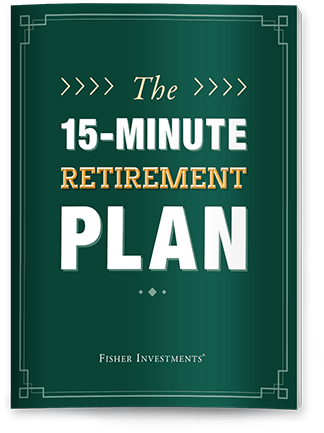Fisher Investments Reviews If CDs Are a Safe Haven

Fisher Investments Market Perspectives
By Fisher Investments — 11/7/2023
Are Cash-Like Investments “Safe”?
Yields on short-term investments such as Certificates of Deposit (CDs) and money market funds rose materially in 2022 and 2023. While many investors might think CDs are “safe,” they aren’t risk free. A CD yield is set for a limited time and when the CD matures, you might have to settle for something yielding less. Additionally, a 5% yield may sound sufficient, but inflation will degrade your purchasing power over time. Yields hovering around 5% sound great during rocky markets, but over longer periods and after factoring in inflation, cash-like returns are much less attractive—especially when compared to stocks. The following chart shows stocks have provided much higher nominal (before inflation) and inflation-adjusted annualized returns than CDs, Treasury bills and Treasury bonds since the late 1960s. Holding an appropriate cash reserve for emergencies or to cover short-term expenses is the foundation of any sound financial plan. But if you need equity-like growth to fund your long-term investment goals, it can be risky to settle for returns that may not meet your needs.
Source: FactSet, GFD, and FRED, as of 10/19/2023. 6-month Certificates of Deposit (CDs), 90-day Treasury bill, 10-year Treasury bond, S&P 500 total return and US Consumer Price Index (CPI) from 12/31/1965 – 12/31/2022. Inflation-adjusted return calculated as nominal return minus annual CPI rate. Note: These securities can be subject to different tax treatment, which can impact real returns in taxable accounts.
Is Now a Good Time to Invest in CDs?
Over the last couple years, the US Federal Reserve (Fed) hiked its benchmark rate aggressively, causing CD yields to jump—attracting investors’ attention and money. However, many expect the Fed may be at or near the end of its hiking cycle. As shown in the following chart, when Fed rate hike cycles end, US stocks (gold) and US bonds (red) have typically gone on to provide higher returns in the subsequent 12 months than CDs (green). While a CDs relative stability may seem appealing now, history suggests this is often a particularly dangerous time to shun stocks or bonds and miss out on potentially stronger gains.
Source: FactSet, GFD, and FRED, as of 10/19/2023. 12-month forward returns after Fed hiking cycles end. Returns shown for 6-month CDs, Bloomberg US Aggregate Bond Index, and S&P 500 total return Index from 12/31/1969 – 12/31/2022.
The Magic of a Bull Market
In our view, we are in a new bull market that started in October 2022. Average returns during bull market periods have historically been (and are inherently) “above average”, despite regular bouts of stock market volatility. Since 1926, US bull markets last about 5 years on average, with gains averaging 23% annualized and 178% cumulative. However, achieving such strong returns requires the patience to endure short-term market pullbacks (declines of 5%-9%) and corrections (declines of 10%-20%), as shown in the two far right columns below. Reacting to market volatility by seeking “safer” yields can increase the risk of missing strong bull market returns.
*For the calculation of Duration, a month equals 30.5 days. Source: Global Financial Data, as of 6/6/2023. Table reflects price level returns from 12/31/1929 – 6/5/2023.





